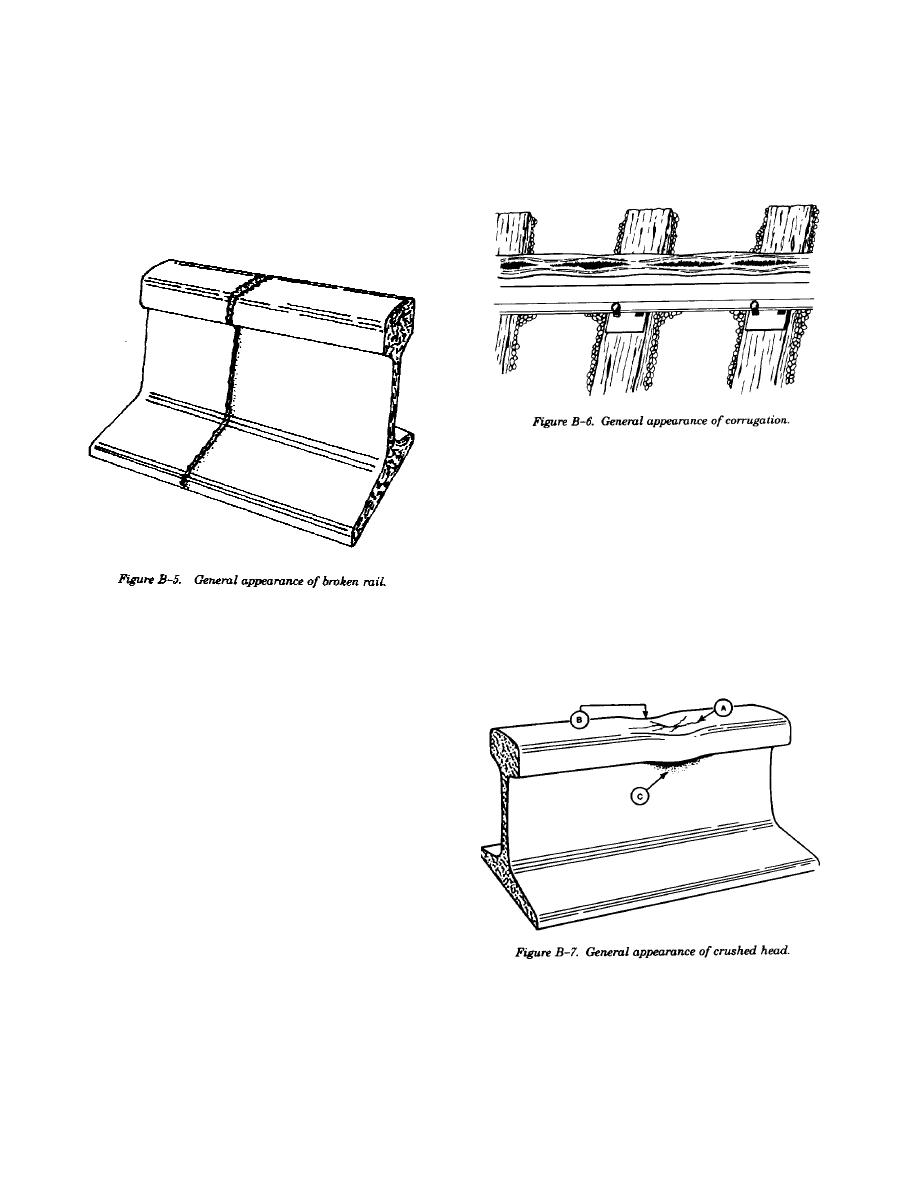
TM 5-628/AFR 91-44
c. Complete break (broken rail).
of the rail varying anywhere from 2 to 18 inches
apart and usually less than 1/16 (0.0625) inch deep.
(1) Description. A complete transverse
separation of the head, web, and base of the rail.
Although the individual waves (ridges) are usually
(2) Appearance in track. May appear as a
only a short distance apart, the corrugations may
hairline crack running completely around the rail,
extend over a considerable distance (see fig B-6).
usually accompanied by bleeding or a separation of
the rail at the break with one or both of the broken
ends battered down (see fig B-5).
g. Crushed head.
(1) Description. The flattening of several
inches of the rail head, usually accompanied by a
crushing down of the metal but with no signs of
cracking in the fillet under the head.
(2) Appearance in track. Generally appears
as:
(a) Flattening and widening of the head
for several inches with the entire head sagging.
d. Compound fissure. See "transverse defects."
(b) Small cracks in a depression on the
e. Corrosion.
running surface.
(1) Description. The decaying or corroding
of the metal in the web or base of the rail.
may be present at the fillet under the head (fig B-
(2) Appearance in track. Pits or cavities in
7).
the upper base or the web of the rail. In advanced
stages, a significant loss of material is evident.
f. Corrugation.
(1) Description. A repeated wavelike
pattern on the running surface of the rail.
Corrugations develop over a long period of time. A
number of factors contribute to the development of
corrugations with the actual cause dependent on
the track and operating conditions. Corrugations
are not a critical defect.
(2) Appearance in track. Small, hard,
bright, short-pitch ridges along the running surface
B-3


 Previous Page
Previous Page
